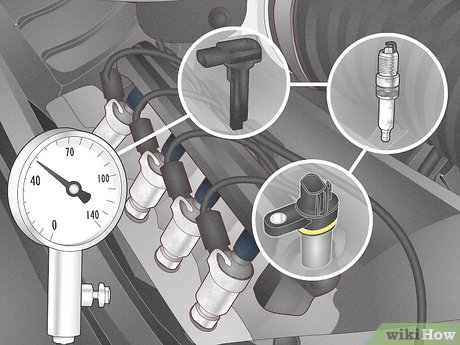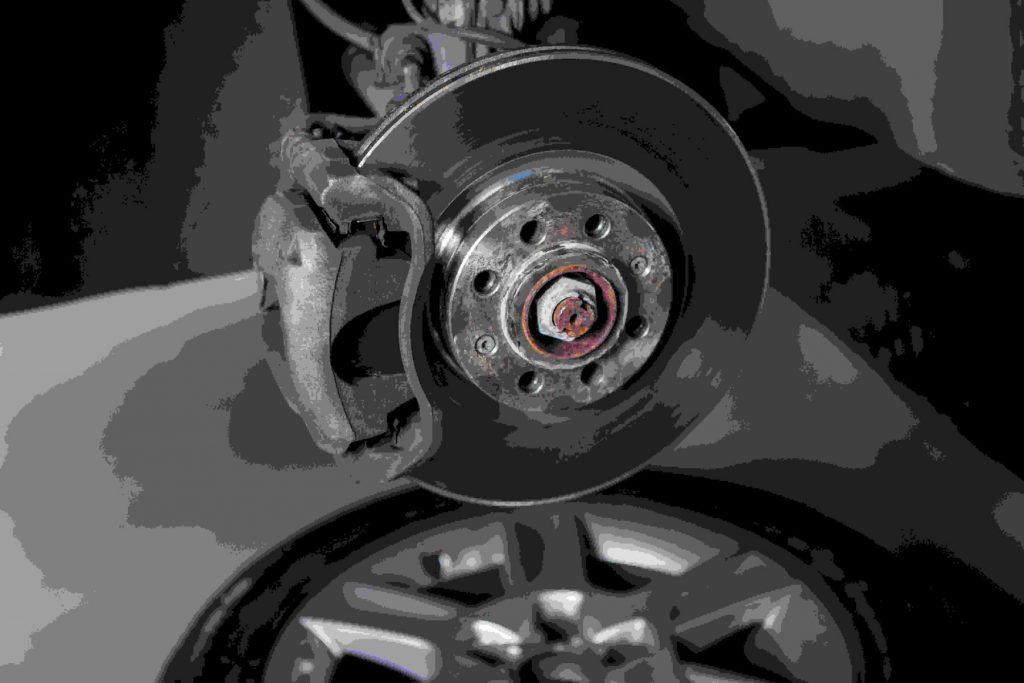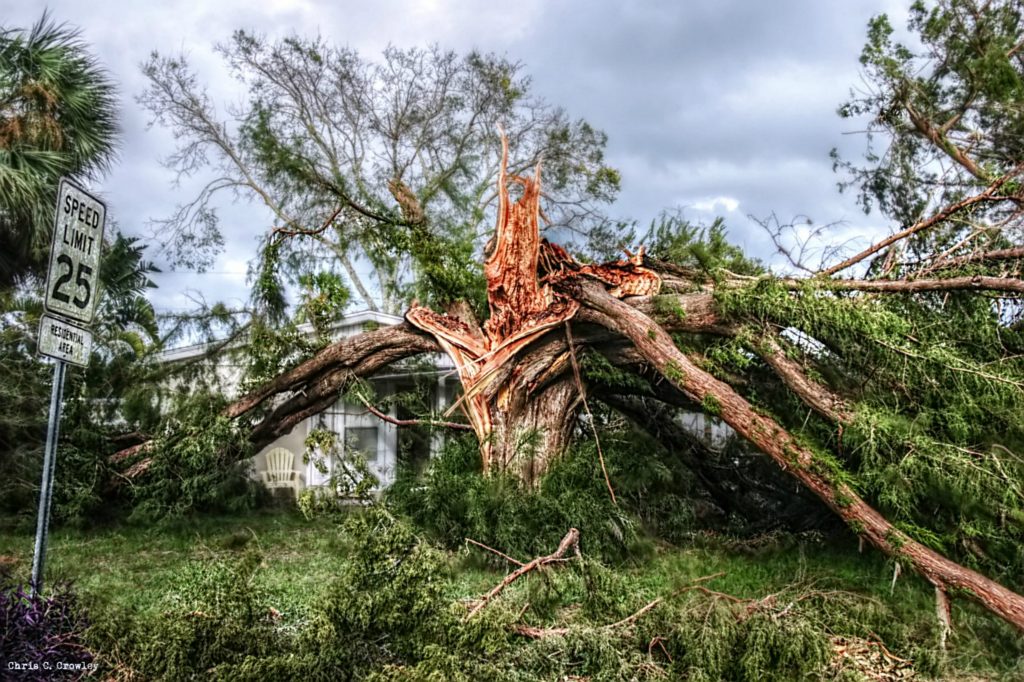It’s a situation no driver wants to face: you’re cruising on a Sharjah highway when suddenly your car starts shaking and the check engine light begins flashing on the dashboard. This combination of symptoms is alarming, and for good reason. A flashing check engine light (CEL) isn’t just a minor glitch – it’s the vehicle’s way of shouting that something is seriously wrong. In this article, we’ll explain why a car might shake when the CEL flashes, what common problems could be causing it, and what steps you should take right away to protect your car (and your wallet). We’ll also share our perspective at Burj Malabar Auto Maintenance on dealing with this issue, as we’ve helped many Sharjah drivers through it.
Flashing Check Engine Light vs. Solid: Why Your Car Shakes
When your check engine light (CEL) comes on, the way it behaves matters. A steady (solid) CEL and a flashing CEL mean very different things:
- Solid CEL (Steady On): This usually signals a moderate issue – for example, a sensor fault or emissions system problem – that should be checked soon, but it’s not an immediate emergency. The car might drive normally or with slight issues under a steady CEL. You should still get it diagnosed, but it’s generally safe to drive a bit before service.
- Flashing CEL (Blinking): This typically indicates a severe problem, most often an engine misfire that is occurring right now. In fact, a blinking CEL means the issue is serious enough to potentially damage your catalytic converter by dumping unburnt fuel into it. It’s usually accompanied by noticeable shaking, sputtering, and loss of power, as one or more cylinders aren’t firing properly. This condition is critical – driving further can quickly lead to more expensive damage, and you should address it immediately.
| Check Engine Light Status | What It Means | Severity | Recommended Action |
|---|---|---|---|
| Solid (Steady On) | Detected an issue (often emissions or sensor related) but not an immediate emergency. Engine may still run relatively normally. | Moderate. Car is generally safe to drive short-term, but don’t ignore it for long. | Schedule a diagnostic scan and service in the next few days. Avoid heavy driving; address the issue soon to prevent bigger problems. |
| Flashing (Blinking) | Indicates a serious problem, usually an active engine misfire that could damage the catalytic converter. Engine will feel rough (shaking, power loss). | Critical. Unsafe to keep driving – continuing can harm expensive parts and leave you stranded. | Pull over immediately when safe, and avoid driving the vehicle. Get it towed or checked by a mechanic right away. |
Why does the car shake when the CEL flashes? The root cause is typically an engine misfire. In simple terms, an engine misfire means one of the engine’s cylinders is failing to combust the air-fuel mixture at the right time (or at all). Essentially, one “beat” of the engine’s cycle is missing, which throws the engine’s balance off. The result is that the engine runs rough, often vibrating or shaking noticeably – especially at idle or during acceleration. A misfiring engine not only struggles to produce power, but it also can send unburned fuel into the exhaust (harming the catalytic converter) and trigger that flashing CEL as a warning.
In summary, a flashing CEL + shaking means “stop driving as soon as possible”. It’s your car’s way of telling you that something under the hood needs prompt attention before worse damage occurs. In the next section, we’ll go over what might be wrong under the hood to cause this urgent alarm.
Common Causes of a Shaking Car and Flashing CEL
There are literally dozens of potential reasons for an engine misfire, but in our experience some culprits are far more common when a vehicle in Sharjah comes in with a flashing CEL and a shaky engine. Here are the likely causes and what’s happening in each case:
- Ignition system issues (bad spark plugs or coils): The most frequent cause of a misfire is a failure in the ignition system. Spark plugs that are worn-out or fouled can’t ignite the fuel-air mixture properly, and ignition coils that have failed will not provide the high-voltage spark the plugs need. If a plug doesn’t fire or a coil quits, that cylinder “goes dead,” causing the engine to sputter and shake. (In Sharjah’s extreme heat, ignition coils can overheat and degrade faster than usual, so staying on top of spark plug and coil maintenance is crucial in our region.)
- Fuel delivery or air-fuel mixture problems: Anything that upsets the careful balance of fuel and air in the engine can lead to misfires. For instance, a clogged fuel injector or weak fuel pump may starve one cylinder of fuel, causing it to misfire. Similarly, a vacuum leak – extra air entering through a cracked hose or gasket – will lean out the mixture and can result in rough idling, vibrations, and a flashing CEL. Faulty engine sensors can contribute as well; a bad oxygen sensor might send incorrect signals and make the engine run too rich or too lean, triggering misfires and shaking. Even a dirty mass airflow (MAF) sensor can mis-measure incoming air and cause performance issues. The bottom line: if the engine isn’t getting the right fuel/air mix at the right time, it’s likely to stumble.
- Exhaust/emissions issues (clogged catalytic converter): In some cases, the catalytic converter itself might be part of the problem. The catalytic converter’s job is to clean up exhaust gases, but if it becomes clogged or damaged, it can create a severe blockage in the exhaust flow. This backup chokes the engine, leading to loss of power, shaking, and often a CEL. In fact, a failing or overheated catalytic converter will often result in both a flashing check engine light and noticeable shaking. However, it’s important to note that catalytic converter issues are often secondary – for example, a long-running misfire can overheat the converter and cause it to clog or fail. If your converter is glowing red-hot or you smell a rotten egg odor, it’s a sign the problem has been ongoing and urgently needs attention.
- Internal engine problems: Less commonly, the misfire can be caused by deeper engine issues. A loss of compression in one cylinder (due to a burnt valve, a leaking head gasket, or worn piston rings, for example) will prevent that cylinder from firing and cause a constant misfire. Likewise, a timing issue (such as a jumped timing chain/belt putting valve timing out of sync) can lead to misfires. These mechanical problems are serious and can be expensive to fix, but they are fortunately not as common as ignition or fuel issues. They usually come into play if your car has high mileage or has overheated severely in the past.
Note: Not all car shaking means an engine misfire. For instance, worn motor mounts or wheel imbalance can cause your car to vibrate, but those issues typically won’t trigger a flashing check engine light. If the CEL is flashing, you can be confident the shaking is due to an engine/electrical issue rather than, say, an unbalanced tire. In other words, the flashing light is telling us “the engine is misfiring,” not something like a suspension problem.
As you can see, most causes circle back to the engine not firing on all cylinders – whether due to lack of spark, improper fuel/air mix, or a mechanical fault. Next, we’ll discuss what you should do right away when faced with this situation to prevent damage and get back on the road safely.
What to Do When Your Car Shakes and the CEL Flashes
Time is of the essence with a flashing CEL and shaking vehicle. Here’s what we recommend you do immediately when this happens:
- Safely pull over and turn off the engine. The first priority is to get off the road. Driving with a misfiring, shaking engine is not safe – you could lose power unexpectedly – and it risks damaging expensive components (like the catalytic converter) very quickly. As soon as you notice the car shaking and the check engine light flashing, find a safe place to pull over and park. Once stopped, turn off the engine. (Continuing to drive even a few more kilometers under these conditions can dump unburned fuel into the exhaust and overheat the catalytic converter, so don’t try to “make it home” if you can avoid it.)
- Check for any obvious quick fixes. If you’re comfortable popping the hood, take a look (with the engine off). Sometimes the cause can be something visibly identifiable: for example, a loose or cracked spark plug wire (in older cars), a disconnected sensor connector, or a broken vacuum hose. Likewise, think about recent events – did you just fill up at the petrol station and possibly get bad fuel? Are you extremely low on fuel? While most causes of a flashing CEL aren’t things you can fix on the spot, it doesn’t hurt to see if there’s a simple issue you can correct (like reconnecting a loose wire) before calling for help. Only do what you feel safe and knowledgeable doing. If nothing obvious stands out, or you’re not sure what to look for, move on to the next steps.
- Use a diagnostic scanner (if available). A flashing CEL means the car’s computer has logged one or more diagnostic trouble codes (DTCs) related to the misfire or other faults. If you have access to an OBD-II scanner, plug it into the port under the dashboard and retrieve the error codes. The codes (for example, P0301 for a misfire in cylinder 1) can give you or the mechanic a head start in identifying the problem. Jot down any codes you find. Don’t worry if you don’t understand them fully – even just knowing which cylinder is misfiring can be helpful. If you don’t have a scanner handy (which many drivers won’t), you can skip this step and focus on getting professional help. The mechanic will pull the codes for you.
- Call for professional help or towing. Given the severity of a flashing CEL, it’s usually best to involve a professional. If the car is still running but running very rough, you might be tempted to limp it to the nearest garage; however, this can be risky. We advise calling a towing service or roadside assistance to transport your car to a mechanic if possible. Continuing to drive a badly misfiring vehicle can turn a small repair into a much larger one. Consult a professional mechanic as soon as you can. If you’re here in Sharjah, you can reach out to us at Burj Malabar Auto Maintenance – we have the tools and expertise to diagnose the issue quickly and get your car fixed. Our trained technicians will perform a thorough inspection (including reading the engine codes and pinpointing the cause of the misfire) and recommend the needed repairs. Whether it’s a simple spark plug replacement or a more complex fix, we’re here to help get you safely back on the road.
Don’t Ignore the Shaking and Flashing Light
A car that shakes while the check engine light flashes is crying out for immediate attention. This situation almost always points to an active engine misfire or similarly critical issue – something that can escalate from a repair bill to a full-blown breakdown if not addressed. We cannot overstate it: continuing to drive in this condition is unsafe for you and unhealthy for your car. The good news is that if you act quickly, you can often avoid major damage. In our Sharjah workshop, we’ve seen drivers catch a misfire early, get a spark plug or coil replaced, and be back on the road the same day. We’ve also seen cases where waiting too long turned a small problem into a costly overhaul.
Our advice as professionals: the moment you feel that telltale shudder and see the CEL start to blink, take it seriously. By following the steps above – pulling over, checking the basics, and seeking help – you’ll minimize the risk to your engine. From ignition troubles and fuel system glitches to sensor faults and beyond, several factors could be at play when your car shakes with a flashing CEL. Identifying and fixing the root cause promptly will save you money, prevent further damage, and ensure your vehicle remains safe to drive.
If you’re in Sharjah and ever find yourself in this stressful situation, remember that we at Burj Malabar Auto Maintenance are just a phone call away. We’ll diagnose the issue with state-of-the-art equipment and get you back behind the wheel with confidence. Your car’s shaking and flashing warning is its way of saying “please help me now” – and with the right response, you’ll be able to say “problem solved” and drive on, safely and smoothly.



